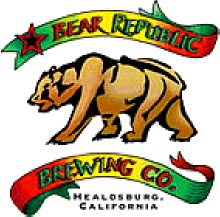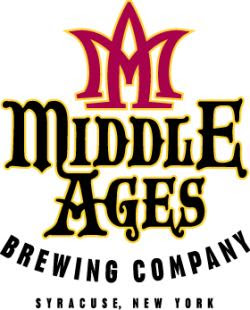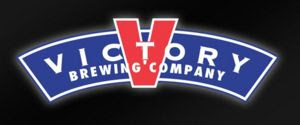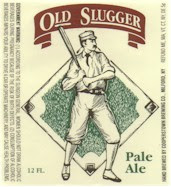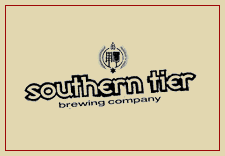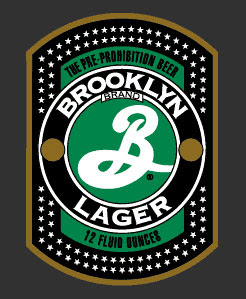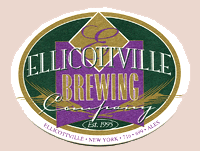It wasn't long ago that drinking beer that came from cans was considered something far too gauche for the drinker of finer beers. But brewers such as Saranac, Sly Fox and Oskar Blues have been scoffed at such constraints. Now, rather than being ignoble, canned beer is considered just as acceptable as bottled beer. In some cases, it may even be better for transport and storage purposes.
Plus, we all pour them into a glass anyway, don't we?
Long gone is the metallic taste that used to creep into the Miller Lites and Coorses of our youth. Since the "can liner" was pioneered by Keystone*, we have not had to add aluminum to our tasting notes.
With this stigma now removed, I felt little guilt about purchasing a twelve pack of four canned beers by Butternuts Beer and Ale in Garrattsville, New York. Butternuts' website describes their mission thusly:
It's a place where common men brew approachable beers for other common men. Translation? No pretentious eight dollar a bottle Weenieweissers allowed. Here, the ingredients are simple and natural. The brewer's art is practiced with creativity and reverence to the old code. The beers are eminently drinkable.
And farting is funny.
(Believe it or not, none of us at BeerJanglin' added that last line.)
So there is a clear -- some might say belabored -- credo to appeal to the "just plain folks" demographic; in fact, the site often takes irreverent potshots at the classic English and German styles. But will they apply the same irreverent whimsy to their beers?
The first beer I tried from the four options was the
Porkslap, a pale ale that is also curiously labeled a
Farmhouse Ale. (I later realized that all four of the beers were misleadingly labeled "Farmhouse Ale," being that they are apparently brewed in a rustic area.)

Porkslap pours a big fluffy head. There is a massive amount of carbonation climbing up the yellow-orange-amber colors. There is a decent amount of haze in the glass, but still remains somewhat clear. The aroma is spicy, with some crystallish pale malts. There is a touch of some orange peel and citrus. The curious earthiness that I might expect in a hefeweizen. Is it really a farmhouse ale?
The taste is a pretty typical pale malt taste, but with almost zero hops. There is a slight citrus taste that could be attributed to a hop but little more. It's not bad, but it's crystal malts or bust. The feel is fizzy and bubbly. It's not a great beer but for the right price it's not a bad one.
My second selection was the traffic-light yellow
Snapperhead IPA. It pours a nice finger of fluffy white head. Not exactly clear, but not what you would call cloudy either. It resembles a bright pilsner.
The aroma is of a pale ale, or an English pale ale; certainly not your typical American IPA. Some citrusy hops do come in, but they are sweet and very very mild. The smell is weak -- not bad, just weak. And another oddly earthy tobacco in the malt.
The taste is more heavily toasted malt than anything. It's a surprise. It ends up being bitter on the back of the tongue. The hops are citrusy but very sharp; tart, astringent, almost acidic. There are two bitters: the burnt kind and the grapefruity kind. It actually could use more of that earthy balance in the malt that it had in the aroma.
The beer feels fizzy on the tongue like ginger ale. It is a very sharp drink, lots of bitter flavors and not enough balance for my liking. It's average.
Third on the list was the thick and milky
Moo Thunder Stout. It isn't the most impressive beer I've ever had because of the lack of head; instead it has a brown film that floats atop. It is a black color with a brown tinge at the edges. It's about average to look at.
But the rest of it gets a heckuva lot better.
The smell is sweet raisin and black licorice. Granted, I hate black licorice, but it fits here. It's not burnt or bitter. It's sweet, and even just a bit sour in a good way. The first sip is slighly roasted stout flavors. More of that sour raisin to balance the roasted malts, which are very nice. It's tart because of that sweet raisiny taste, and really pleasant because of it. Comes in as it warms with toffee, caramel and molasses. The feel is milky smooth --appropriately -- and just a tad bubbly. It's quite good.
The fourth beer in the pack, the
Weissbier, really surprised me. It pours a cloudy-as-hell banana yellow. There is no head, but it doesn't seem to move. Appears slightly illuminated.
The Weissbier has a pungent and spicy Belgian-ish ale aroma. Also, it has the sweetness and wheat base of a hefeweizen. Mostly it's orange peel and a hint of banana. Very strong and very pleasant.
The taste is citrusy and orange. It has the flavor of Belgian spice, which is subdued but acts as a nice accent. Sweet in an appropriate way. It's puckery at the end. It feels milky and bubbly, dry at the swallow. This is a surprisingly nice wheat beer. It has the sweetness of a hefeweizen, with the wheaty mildness of a witbier.
In my ever-so-humble opinion, the Weissbier and the Moo Thunder are the class of the pack, although the Porkslap is their flagship beer. Here's hoping that if cans are truly the superior method of beer transport, that some of our finer breweries begin making the move so maybe our beers will stay out of the light, and last longer.
*I have no idea if this is actually true.








